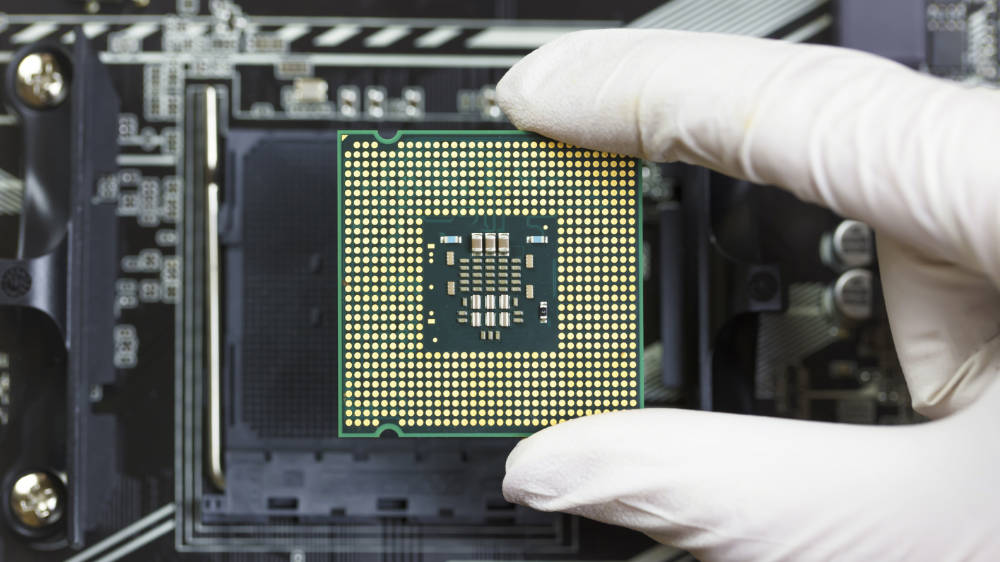It’s rare, pricey and irreplaceable; here’s why helium’s… ON THE RISE

Picture: Getty Images
- Global helium supply has tightened due to a combination of factors while demand continues to grow
- Despite its high cost, helium makes up a relatively small part of the total cost of applications it is used for
- Preference for domestic supply unlikely compared to other critical commodities due to the scarcity – particularly for natural occurring helium
Helium is a famously scarce yet highly valued commodity that is irreplaceable for the many high tech applications that it is used for.
It is used in semiconductor manufacturing, nuclear energy production, solar panels, optic fibre and the cooling of superconducting magnets in MRI scanning machines.
Demand is also growing with the market expected to grow from an estimated US$5bn in 2023 to over US$8bn in 2030.
Speaking to Stockhead, Noble Helium (ASX:NHE) managing director Shuan Scott said the helium market is quite interesting and dynamic at the moment with some structural changes happening.
“Some of those contracting supply from Russian had basically cancelled those contracts due to what is going on there and are now revising where they are,” he said.
“As a good example of how the Ukraine situation has disrupted helium supply, Algeria, which had two big LNG plants that supplied about 8% of the world’s helium supply, is now feeding gas straight into the pipeline network into Europe.
“This has led to one of the plants being bypassed entirely and 4% of the world’s helium supply disappearing overnight.
“All the big industrial companies are now looking around for alternative sources of supply due to geopolitical risk or not linked to production of oil and gas.”
Most of the world’s helium is currently produced as a by-product of gas production – particularly LNG where helium is concentrated to a point where it can be extracted separately from the liquefied natural gas.
Locally, the temporary closure of the Darwin LNG plant has led BOC to shut its helium plant in Darwin.
Pricing staying stable
The supply shocks have impacted on short-term contract and spot prices, which currently range between US$650-3,500 per thousand cubic feet (Mcf).
Longer-term contracts have been renewed at the current level of between US$400-500/Mcf.
“On the pricing side of things, we work with Phil Kornbluth of Kornbluth Helium Consulting, a US market expert on helium, who is pretty much involved in every transaction that goes on, so we get an update every month,” he added.
Scott pointed out that this pricing is for Tier 1 contracts with major companies while Tier 2 contracts, which are for smaller volumes and are typically sold direct to the customer or smaller players, normally trade at a premium to Tier 1 prices.
“The advice that we have been getting is that the big industrial gas guys, once the price gets to a level, they are pretty good at hanging on to it. So we are not expecting to see any significant downward revision in pricing,” he added.
“While the price per unit is high, the actual price when you look at the total as an input cost is relatively small as not much helium is actually used in each application. It is a relatively small part of the actual cost profile.
“Take semiconductors for example, they represent about US$1bn of the current helium wholesale market, but that’s a drop in the ocean of the multi-trillion dollar semiconductor industry.
“So the element of cost is non-elastic, because without it, the cost is way more.
“The unique thing about helium is that in all the applications, MRI, semiconductors, etc, it is critical, without it, you can’t operate, so the consumers just pay it. It is quite an interesting dynamic.”

Can’t afford to be choosy
Outside of producing helium as a natural gas/LNG by-product, reservoirs with significant amounts of helium are a rarity, meaning that potential buyers can’t afford to be choosy about where the gas comes from.
“I think helium is a little bit apart compared to something like lithium, rare earths or what have you,” Scott noted.
“Those deposits exist in multiple places all over the world, so there probably is some potential for preferring domestic resources first, but that is simply not feasible for helium.”
He notes that while NHE is still in the early stages of exploration for its North Rukwa project in Tanzania, the data from the few wells it has already drilled have proved that the reservoir is unique and simply doesn’t exist anywhere else.
“The helium is just mixed with nitrogen, there’s no significant amounts of CO2 or hydrocarbons, which is very simple to separate,” he said adding that the company is currently focused on the gas cap, which has proven to be some six times larger than originally mapped.
“Our plan would be to during the next dry season, which is June to September kind of time frame, we will go in with some low cost drill equipment and basically test it.
“What we want to do is bring a sample to surface that we can analyse and also to flow it to see what kind of flow rates we can get from the reservoir.
“Those factors will obviously move us closer to our strategy because in parallel we are talking to offtakers.”
Development costs are expected to be very low due to the gas composition as well as the shallow nature of the reservoir – just 85m from the surface – with minimal to no land access issues.
“On the downstream processing side, potential offtake partners we have spoken to are all offering funding, are all offering to pay for that,” Scott added.
“Then what will happen as we sold helium, the price will just be adjusted to return their capital.”
ASX players on the helium trail
While NHE has enjoyed significant success with its North Rukwa project, it is far from being the only ASX company that is hunting for helium deposits or which has enjoyed success on that front.
With potential development of its Galactica/Pegasus project in Colorado significantly de-risked by successful third-party commercialisation of adjoining Red Rocks helium project, Blue Star Helium is preparing to drill its maiden development well in the current quarter.
Exploration drilling at the project has already proved remarkably successful, with four wells flowing between 125,000-412,000 cubic feet of gas each with high air-corrected helium concentrations of 2-6.1%.
A number of development pathways are currently under consideration including a leased processing plant and third-party operated option.
BNL noted that the final development is expected to include a CO2 extraction route and by-product stream.
While Buru Energy is focused on its conventional oil and gas assets in the Canning Basin, Western Australia, its wholly-owned subsidiary 2H Resources is exploring for natural hydrogen and associated helium over a 30,000km2 package of ground in South Australia.
This was chosen due to South Australia having the regulatory framework in place for natural hydrogen exploration.
2H Resources has also applied for six special prospecting authorities in Western Australia, four in a 75:25 partnership with Gehyra Flux covering ~20,000km2 northwest of Perth adjacent to the margins of the Perth Basin and two in the Goldfields region between Norseman and Kalgoorlie.
Constellation Resources (ASX:CR1)
Magmatic nickel sulphide explorer Constellation Resources is diversifying its portfolio, applying for six special prospecting authorities covering 56,192km2 in the Edmond-Collier and Yerrida basins of Western Australia that are prospective for helium and associated gases.
The geological terrains within these areas contain high heat-producing radiometric granites and greenstone basement units that are prospective source-rocks for ongoing helium and associated gas generation.
Equally importantly, these units are overlain by a folded sedimentary basin sequence that could contain potential seals and reservoirs which can both trap and contain helium.
While focused primarily on natural hydrogen, Gold Hydrogen’s Ramsay-1 and Ramsay-2 exploration wells in South Australia have also intersected significant amounts of helium.
Preliminary gas samples have returned helium concentrations of up to 17.5%, which lends support to its best estimate prospective resource estimate of 41Bcf of helium in PEL 687.
Following a successful flow of raw gas with significant concentrations of helium at a rate of 1 million cubic feet (MMcf) per day from its Jesse-1A well at the Red Helium project in Utah’s Paradox Basin, Grand Gulf is now planning to sidetrack the well.
This sidetrack will seek to achieve effective isolation of the different zones, allowing the company to optimise production from the primary Leadville formation as well as testing deeper helium producing formations including the highly prospective Devonian McCracken sandstone.
Acid solubility testing results have also indicated that Leadville is amendable to acid stimulation, which could increase flow rates by both removing wellbore damage and connecting the wellbore to near-wellbore hydrothermal dolomitic porosity.
The Red Helium project is geologically analogous to Doe Canyon about 25km to the east that currently produces about 10.7MMcf of helium per month.
Greenvale Energy is focused on progressing its flagship Alpha Torbanite project but it is also in the process of farming into EP 145 in the Amadeus Basin which sits within recognised play fairways for helium and hydrogen and contains proven hydrocarbon discoveries.
It hosts an existing best estimate prospective resource of 440 billion cubic feet of natural gas, 26.4Bcf of helium and 26.4Bcf of hydrogen and is on trend with the producing Mereenie oil and gas field.
GRV has already paid the transfer fee under the agreement to earn a 75% interest in EP 145 and ministerial approval is expected soon before completion on 30 April 2024.
Preparations are underway for a seismic program that will be completed in August 2024 to guide targeting for drilling in 2025.
Related Topics

UNLOCK INSIGHTS
Discover the untold stories of emerging ASX stocks.
Daily news and expert analysis, it's free to subscribe.
By proceeding, you confirm you understand that we handle personal information in accordance with our Privacy Policy.








